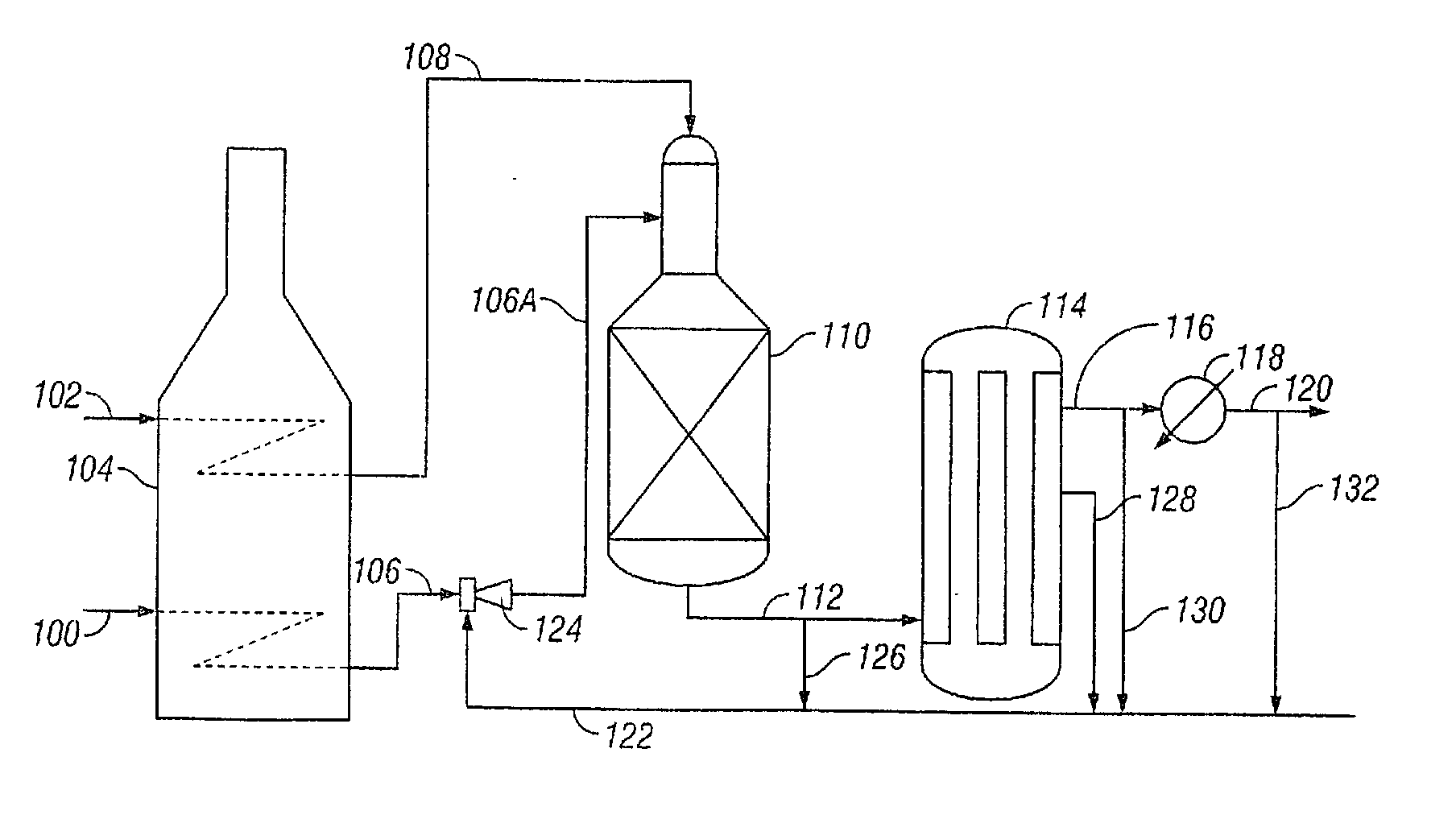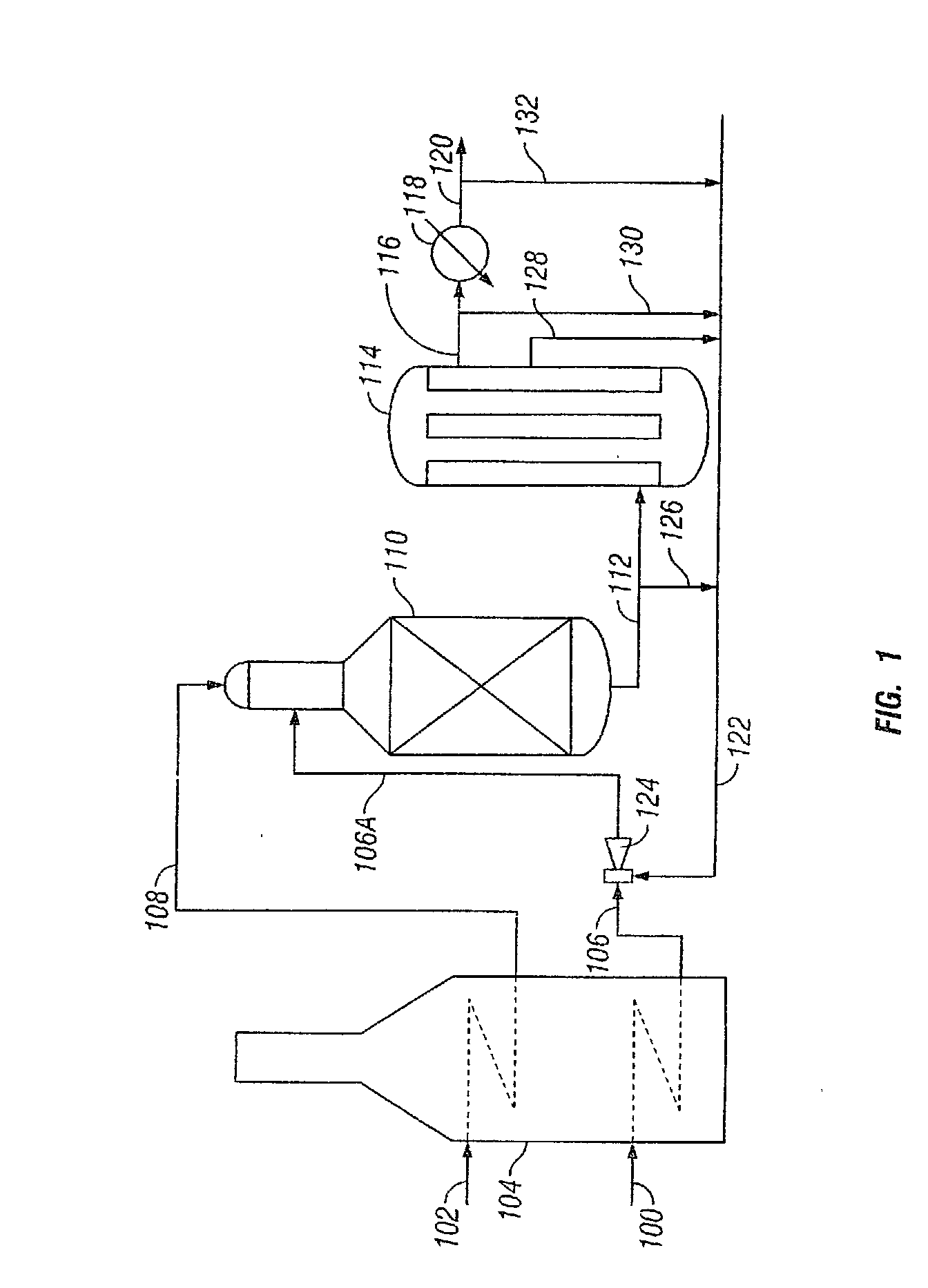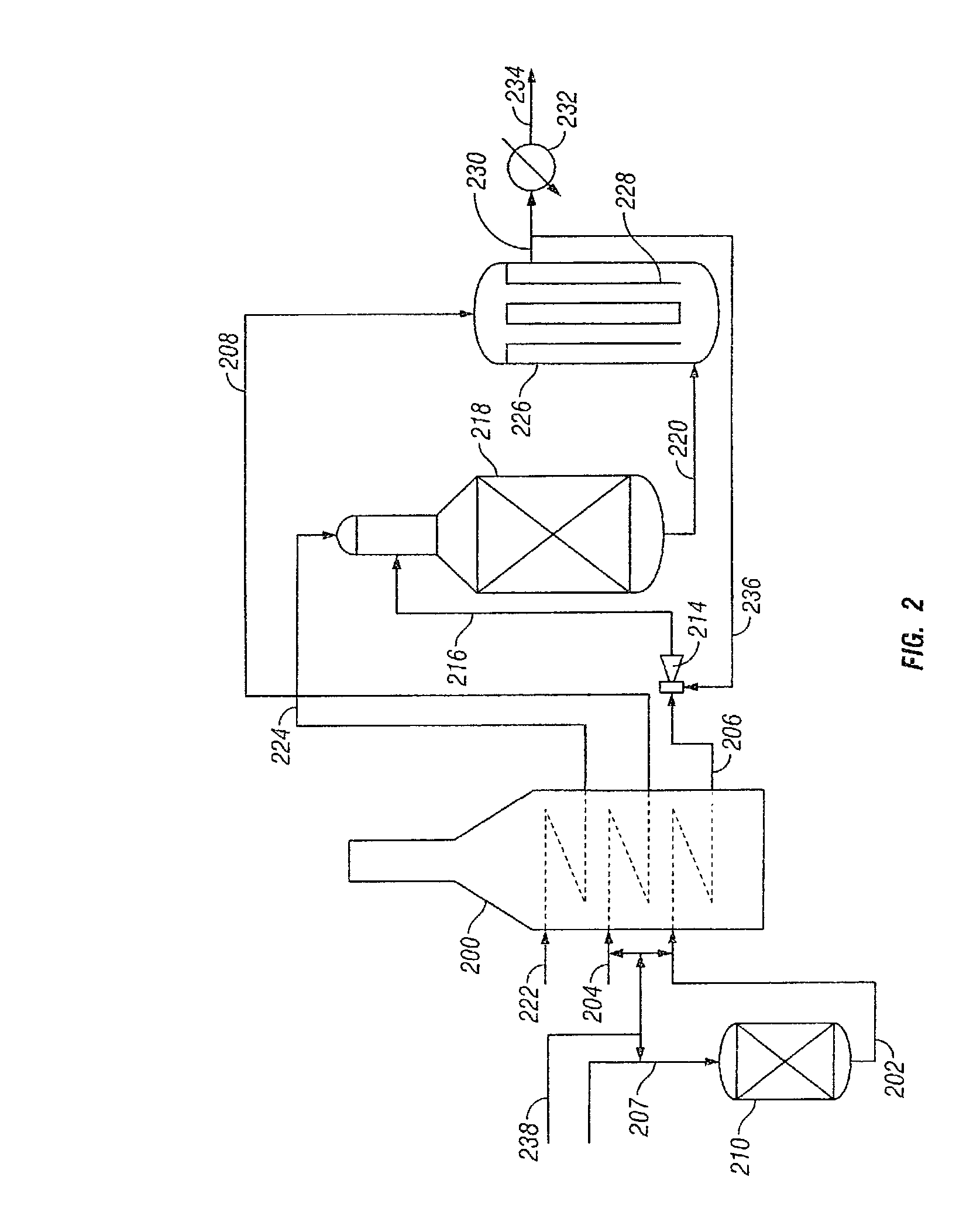Hydrogen enrichment scheme for autothermal reforming
a technology of hydrogen enrichment and autothermal reforming, which is applied in the direction of energy input, lighting and heating apparatus, separation processes, etc., can solve the problems of light pressure drop, achieve the effect of reducing the duty of the heater 104, facilitating the introduction of the burner, and reducing the molar ratio of steam
- Summary
- Abstract
- Description
- Claims
- Application Information
AI Technical Summary
Benefits of technology
Problems solved by technology
Method used
Image
Examples
Embodiment Construction
[0025] Some specific examples of operating conditions for the reforming according to the FIG. 2 embodiment are shown in Table 1 for various overall steam-carbon ratios and oxidants:
[0026] [t2]
1TABLE 1 Raw Feed Total Feed H2 in Steam- Recycle / Steam- Total Carbon Feed Ratio Carbon H2 ex-Pre- Feed Ratio (line Oxidant (line 236 / Ratio (line reformer (line 206) (line line 206) 216) (line 212) 216) (molar) 222) (molar) (molar) (mole %) (mole %) 2.7 Air 0.33 3.2 14.6 27.4 2.5 Air 0.33 2.9 13.9 26.7 2.5 Air 0.66 3.2 13.9 32.1 2.7 98% O2 0.33 3.3 14.6 34.8 2.0 98% O2 0.33 2.4 12.3 31.9 1.5 98% O2 0.33 1.7 10.5 29.2 1.5 98% O2 0.66 1.9 10.5 38.4 0.6 98% O2 0.66 0.64 6.6 30.2 0.6 98% O2 0.40 0.6 6.6 24.1 2.5 98% O2 0.33 2.9 13.9 28.6 2.5 98% O2 0.66 3.3 13.9 35.0
[0027] Having described the invention by way of the embodiments illustrated above, many variations and modifications of the invention will be apparent to those skilled in the pertinent art. It is intended that all such variations and ...
PUM
| Property | Measurement | Unit |
|---|---|---|
| Temperature | aaaaa | aaaaa |
| Pressure | aaaaa | aaaaa |
| Size | aaaaa | aaaaa |
Abstract
Description
Claims
Application Information
 Login to View More
Login to View More - R&D
- Intellectual Property
- Life Sciences
- Materials
- Tech Scout
- Unparalleled Data Quality
- Higher Quality Content
- 60% Fewer Hallucinations
Browse by: Latest US Patents, China's latest patents, Technical Efficacy Thesaurus, Application Domain, Technology Topic, Popular Technical Reports.
© 2025 PatSnap. All rights reserved.Legal|Privacy policy|Modern Slavery Act Transparency Statement|Sitemap|About US| Contact US: help@patsnap.com



